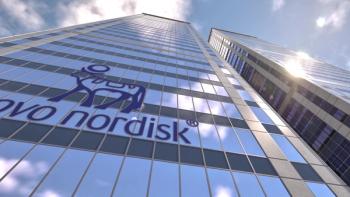
PTSM: Pharmaceutical Technology Sourcing and Management
- PTSM: Pharmaceutical Technology Sourcing and Management-06-08-2009
- Volume 5
- Issue 6
Best Practices in the Supply Chain
Consumer-care products, electronics, and select industrial firms comprise AMR Research's Supply Chain Top 25 for 2009, offering an opportunity for the pharmaceutical industry to examine best practices in supply-chain management.
Effective supply-chain management, which involves the procurement of raw materials, the conversion of those materials into finished products, inventory management, and the distribution of those products, is a goal shared by all companies in all markets. For the pharmaceutical industry, effective supply-chain management is particularly important as the industry seeks ways to reduce costs and maintain regulatory compliance and quality and safety standards. Although the supply-chain demands of companies that use discrete manufacturing and produce consumer or industrial products may differ from pharmaceutical companies using process manufacturing, examining best practices from outside the pharmaceutical industry is a helpful tool to explore ways to optimize sourcing, procurement, inventory management, and distribution.
Top supply-chain companies
AMR Research released last week its
Retail and manufacturing companies were evaluated and chosen using the latest listing of
To determine its top supply-chain performers, AMR uses two main components: financial and opinion. Public financial data provide information on company performance, and the opinion component examines potential and future leadership in supply-chain practices. The financial component accounts for 60% of a company’s score, and opinion represents 40%. Three metrics, return on assets (ROA), inventory turns, and revenue growth, are used to calculate the financial component. ROA provides a general measurement for operational efficiency and productivity. In the 2009 analysis, a three-year weighted average of ROA was used: 50% for 2008, 30% for 2007, and 20% for 2006. Inventory turns provide a measurement for costs, and AMR used a quarterly average calculation. Revenue growth, which measures the change in revenue from the prior year, provides an indication for innovation, says AMR. ROA and inventory turns were each weighted at 25%, and growth was weighted at 10%.
The opinion component of the ranking is designed to provide a forward-looking view that reflects the progress companies are making toward the ideal demand-driven supply network. The opinion component consists of two elements, a panel of AMR Research experts and a peer panel, which are each weighted at 20%. The AMR panel consisted of 20 panelists with various industry and functional specialties, and 170 panelists voted as part of the peer panel.
Best practices of a demand-driven supply chain
Adherence to and success in practicing demand-driven principles in the supply chain are the key measures in achieving a top ranking in AMR’s listing. Demand-driven principles refer to a system of technologies and processes that senses and reacts to real-time demand signals in a supply network of customers, suppliers, and employees. This model has three overlapping areas of responsibility: supply management, which involves manufacturing, logistics, and sourcing; demand management, which includes marketing, sales, and service; and product management, which focuses on research and development, engineering, and product development. Supply chains that use this approach, says AMR, manage demand rather than simply responding to it, have a networked rather than a linear approach to global supply, and embed innovation in their operations.
The top 25 supply-chain companies
The top five companies in
Lessons learned
AMR says that one of the key lessons learned from the evaluation process is that public financial metrics alone are not sufficient in identifying the businesses that have the best potential to earn money with a demand-driven approach to the supply chain. Similarly, soft assets, such as brands and intellectual property, which are valuable for demand creation, cannot be adequately accounted for under conventional accounting methods.
Instead, operational and innovation excellence are the two key measurements in evaluating success in implementing a demand-driven supply chain, according to AMR. Operational excellence may be measured by conventional business metrics, which can include perfect order rate and total supply-chain costs. Innovation excellence may be harder to measure, but important metrics include time to value and return on new-product development and launch.
Articles in this issue
over 16 years ago
Bleak Times for the Global Biotech Industryover 16 years ago
Limits to Growth?Newsletter
Get the essential updates shaping the future of pharma manufacturing and compliance—subscribe today to Pharmaceutical Technology and never miss a breakthrough.




